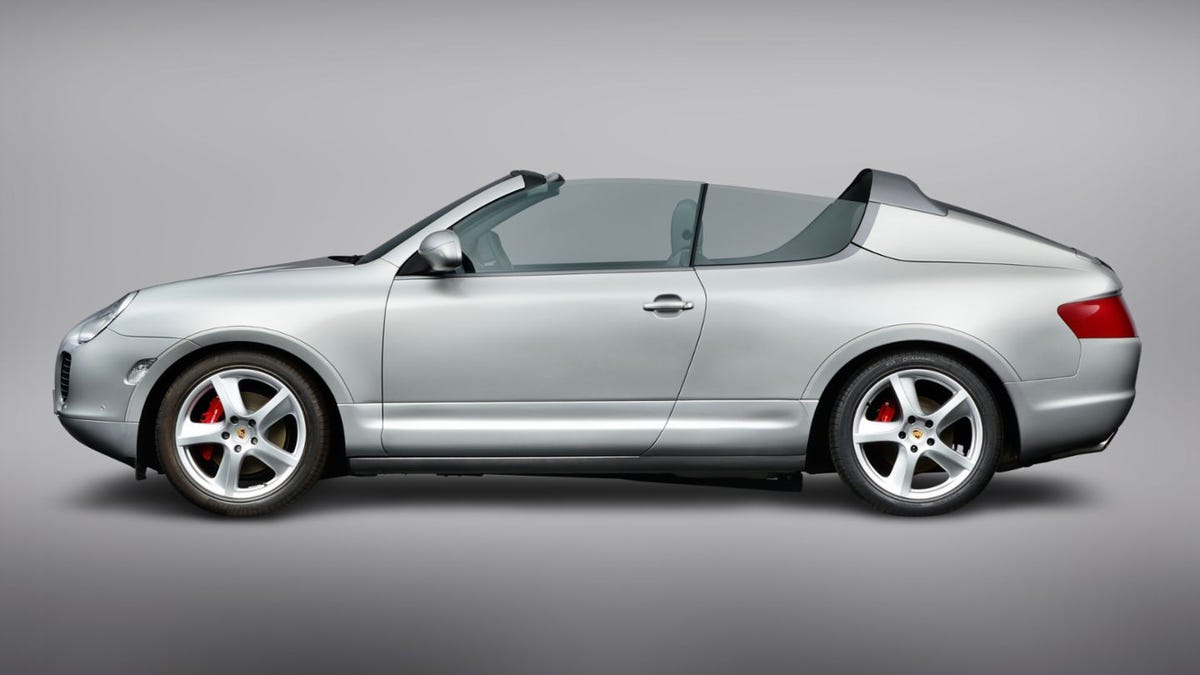Porsche Almost Did a Cayenne Cabrio, But Thought Better of It

Image: Porsche
Once upon a time, the Cayenne was derided as the vehicle that was finally going to kill Porsche. Of course it ended up saving the company, and today — alongside the Macan — annually it records about double the sales of the 911. Porsche today would look far different without the Cayenne; there’s a chance it might not look like anything at all.
But for all the criticism Stuttgart received for allegedly tarnishing its brand with an SUV in the early aughts, Porsche exercised a fair bit of caution when introducing the Cayenne. We know this because Porsche strongly considered going much further. Too far, some would say.
This year happens to mark the 20th anniversary of the Cayenne, and so Porsche is digging up some notable nuggets from its archive — one of those being a Cayenne convertible.
Image: Porsche
Yes, years before the surprisingly rare Nissan Murano CrossCabriolet, Porsche considered doing up a soft-top version of the Cayenne. Now, this isn’t a new revelation; this curiosity has been chilling in the company’s assuredly well-ventilated sanctuary for a while, and first surfaced in 2017 in a video it produced. But the occasion marks a reason to revisit it, and so we shall.
G/O Media may get a commission
The cabriolet concept accompanied other takes on the Cayenne that Porsche was considering around the time of the nameplate’s launch, including a coupe variant (not to be confused with today’s Cayenne “Coupe,” which has four doors) and one lengthened to fit an extra row of seats. But the open-air proposal is the only one that was realized as a life-size model. It doesn’t drive, though — which becomes more understandable the minute you see it from the back.
Image: Porsche
This pitch didn’t get especially far along, as Porsche never even decided on a rear-end design. Neither looks great, though in this author’s opinion, the one on the passenger side meshes with the lines of the SUV much better. The alternative comes across like a desperate attempt to masquerade the Cayenne as a 996 Cabriolet, and that’s a bridge too far for even the world’s most gifted designer.
Image: Porsche
Porsche had grand ideas for how the soft top-folding mechanism would work, and how the Cayenne Cabrio might preserve some semblance of cargo utility despite all the extra scaffolding taking up space. From the company’s own blog:
Had the car reached production, a single rear design would of course have been settled on in the end, and the technical issues would undoubtedly have been resolved. A now-familiar soft-top mechanism was envisaged: the luggage compartment lid of the Cayenne-PFM [Package Function Model] was attached at the front and rear, allowing it to be opened in both directions. The roof would travel over the fixed roll-over bar and be ‘swallowed’ in the rear by the luggage compartment lid, which opened in the opposite direction, folding in a z-pattern. It has worked in a very similar way to this on the Porsche 911 Targa since the 991-generation model. The mechanism never got past the computer simulation stage for the Cayenne convertible, however, and was never fully constructed. Today, the fabric top is stowed in the luggage compartment of the museum piece and must be fitted manually if required.
This “Package Function Model” — Porsche-speak for “design study” — started life as a production Cayenne before its roof was removed. However, the company’s engineers took no measures to structurally compensate for that omission, which roadworthy convertibles require. So the droptop SUV doesn’t move! It simply sits idle, a 5,500-pound, dual-assed question mark prompting Porsche Museum-goers to stare blankly and ask, “why?”



